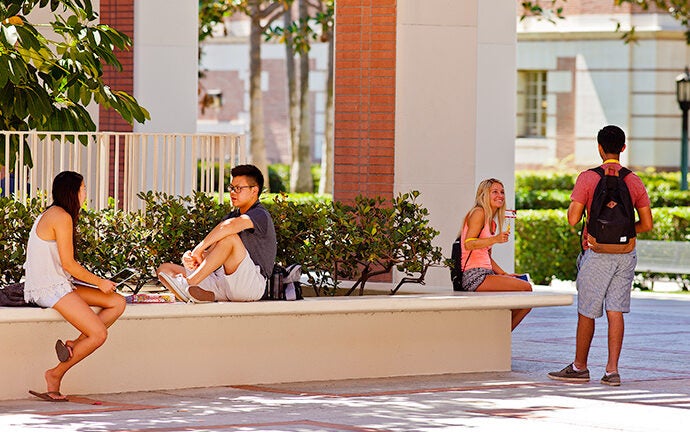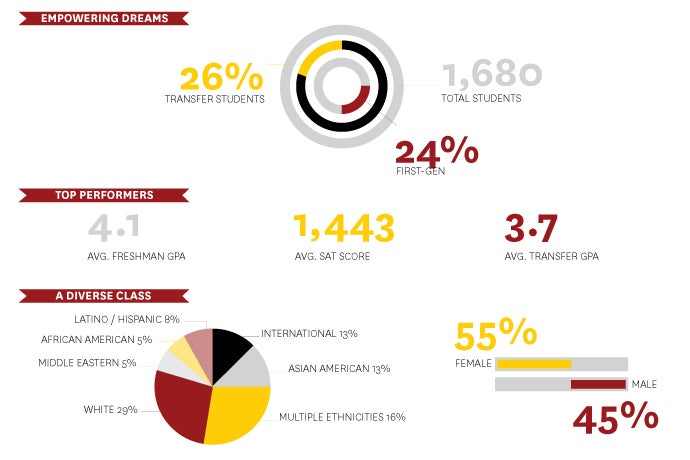
USC Dornsife welcomes one of its strongest incoming classes for the Fall 2017 term
USC Dornsife welcomed its largest, most diverse and most academically gifted class ever this Fall.
The incoming class of 1,700 students includes 400 who are the first in their families to attend a college or university. The first-generation students represent about a quarter of the new group.
Transfer students make up more than 25 percent of the incoming group, and more than 70 percent are people of color. Well over half are women.
Hailing from far and wide, about two-thirds joined the university from outside of Southern California, with more than a third from other states and 12 percent from other countries.
These students represent some of the brightest in USC Dornsife’s history, with adjusted grade-point averages for freshmen ringing in at well over 4.1 and transfer students at 3.7. Scholastic aptitude test scores for freshman averaged just over 1440, putting them in the 97th percentile.
“Dornsife is attracting some of the most qualified applicants in the world, and from all aspects of society,” said Andrew Stott, college dean of undergraduate education at USC Dornsife. “We’re delighted to be welcoming these amazing students into our exceptional educational programs.”
Growing programs
The natural sciences and social sciences drew roughly equal numbers of students, splitting 85 percent of the incoming class.
While the humanities drew fewer students, the division grew by nearly 8 percent — more than the other two divisions combined.
Several USC Dornsife programs saw considerable growth. Earth sciences and sociology added almost a third more students each, history and physics and astronomy grew by more than 20 percent, and the neurosciences, mathematics and political science programs grew by 10 to 15 percent each.
